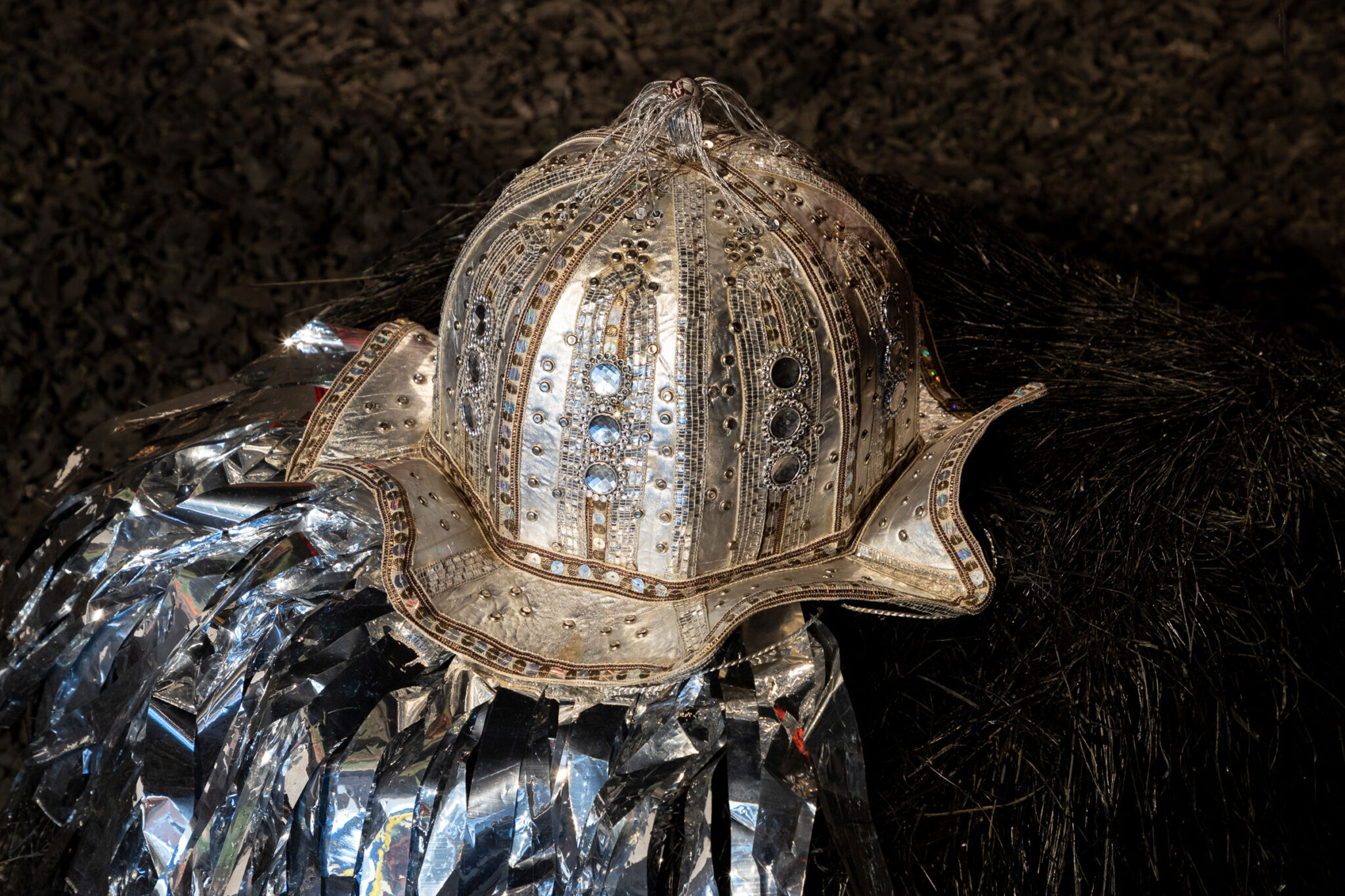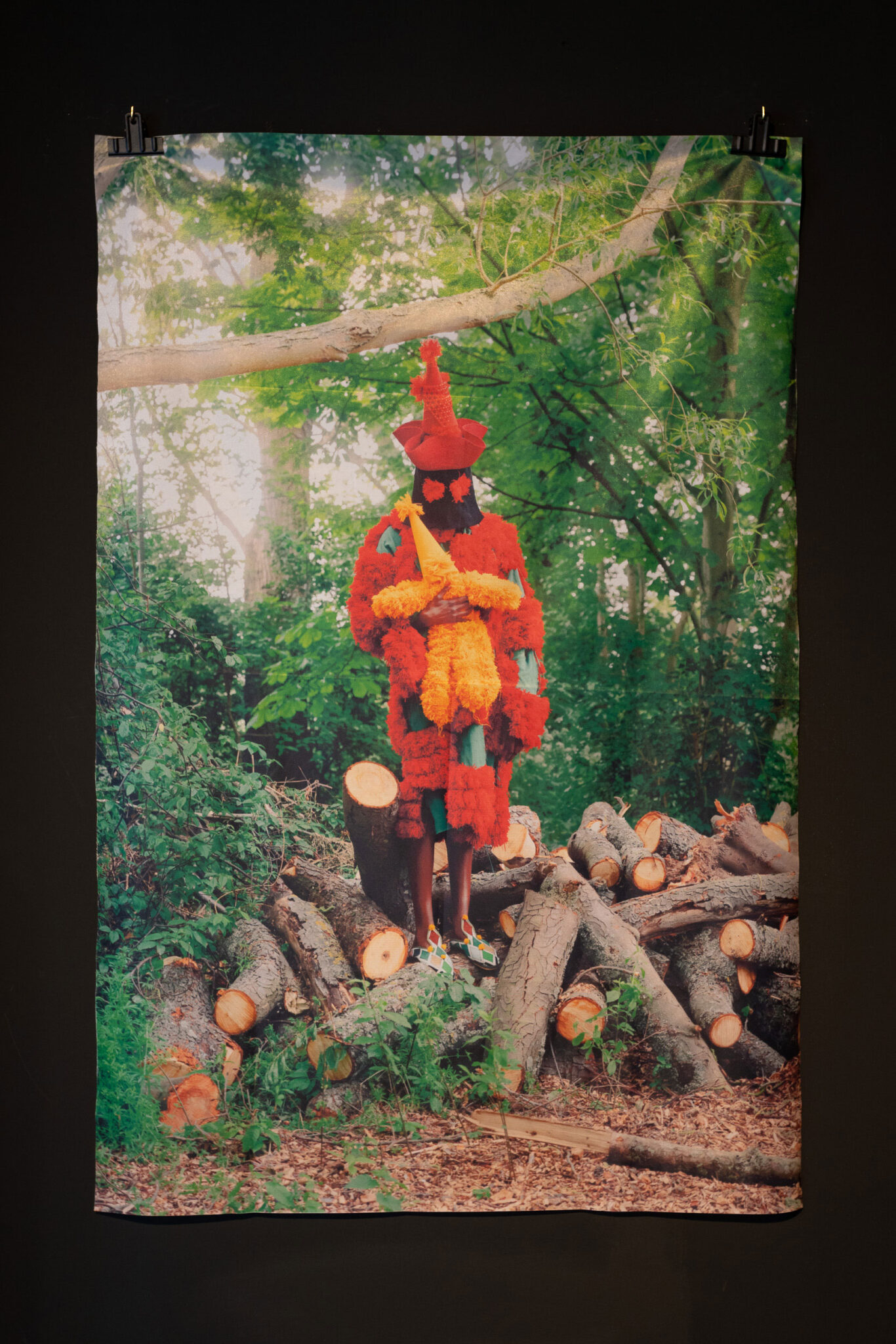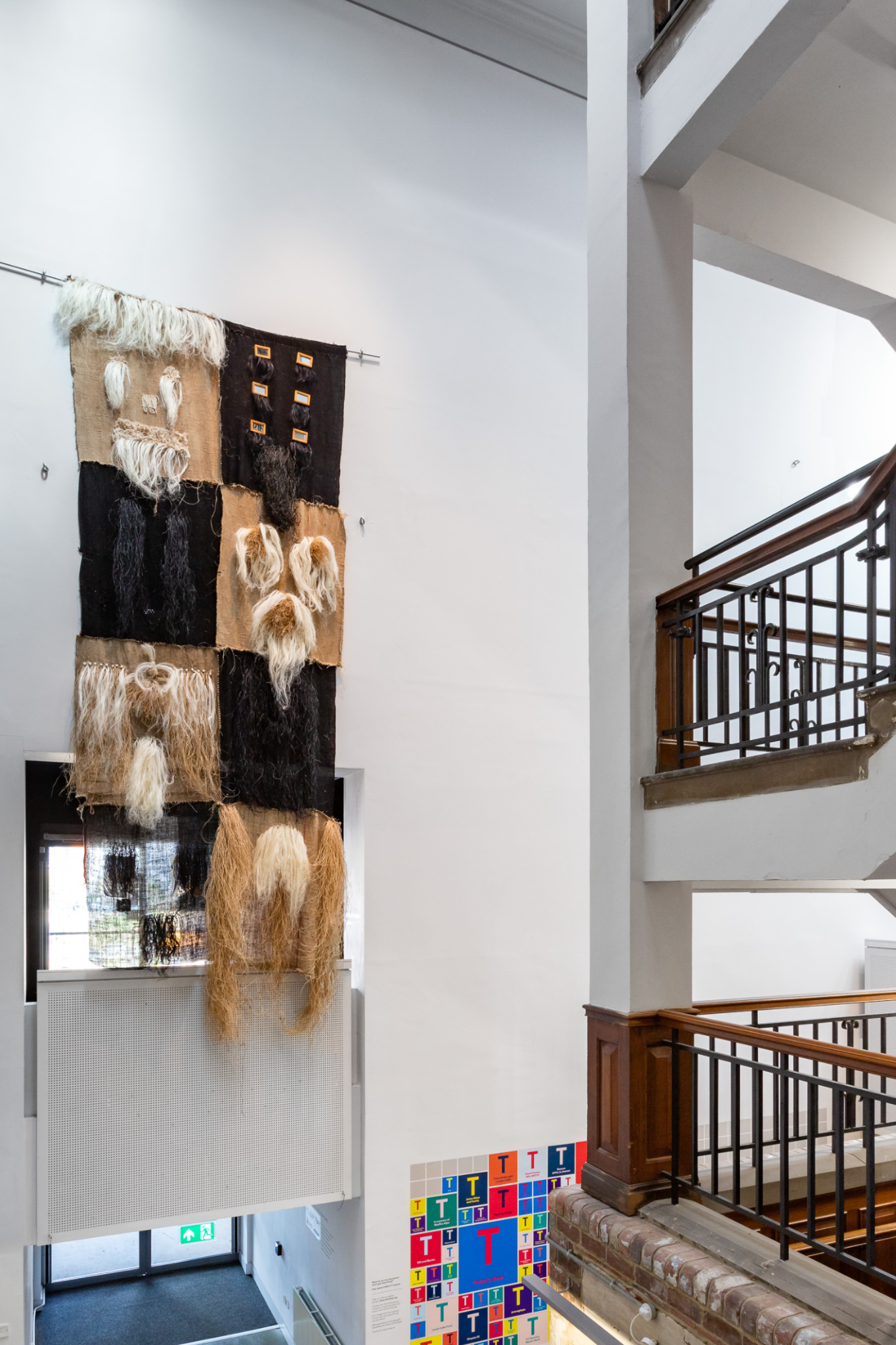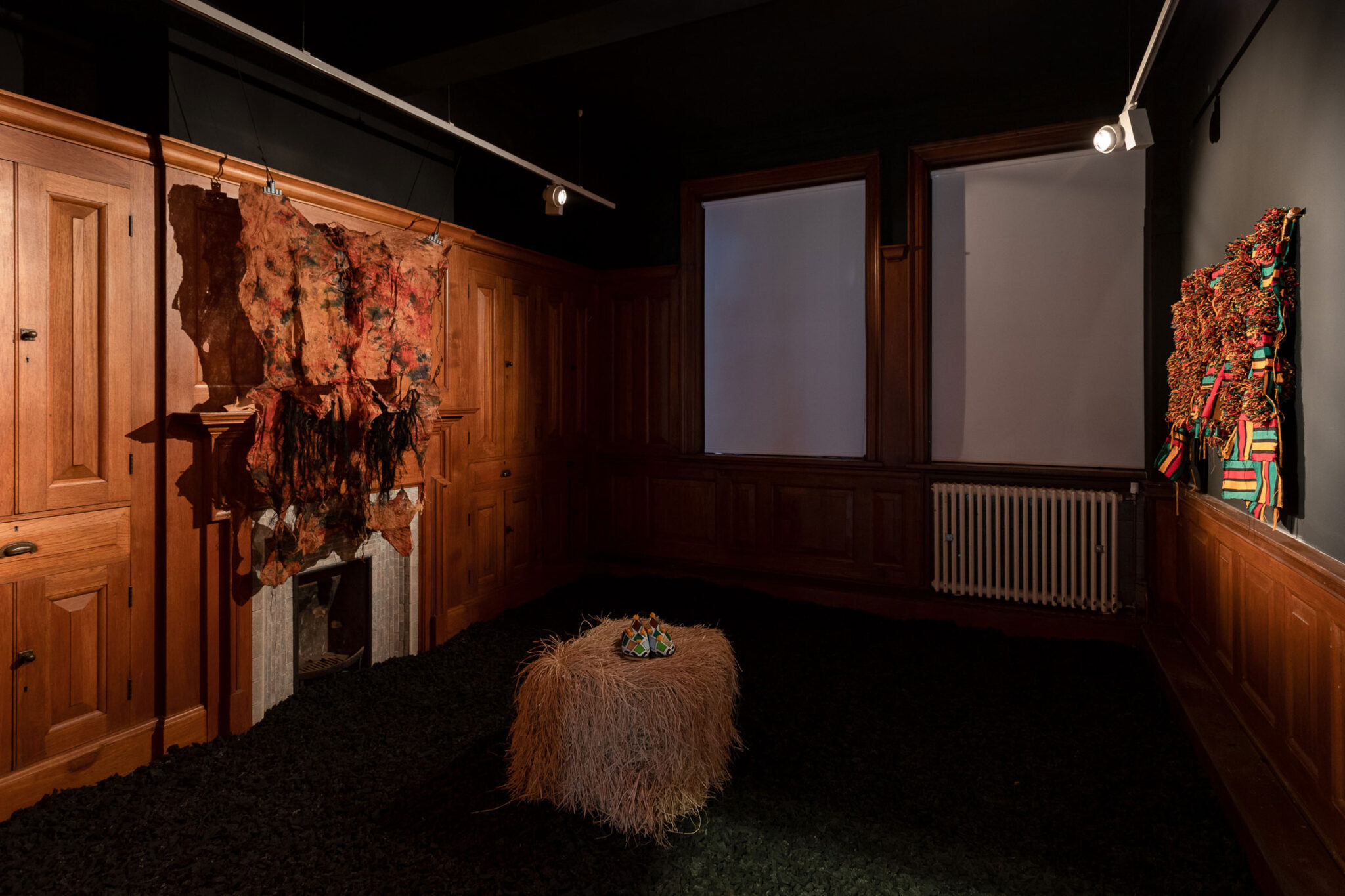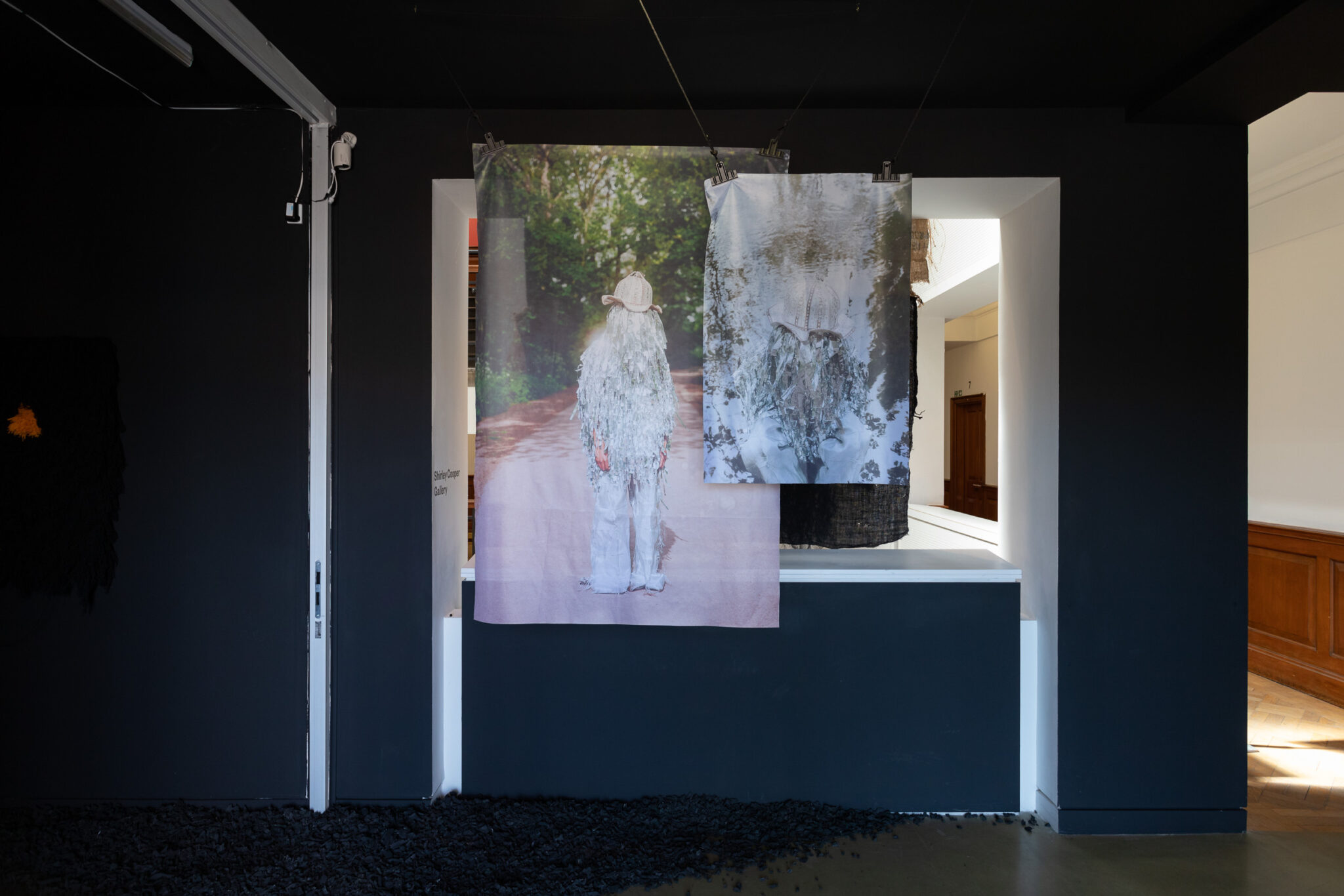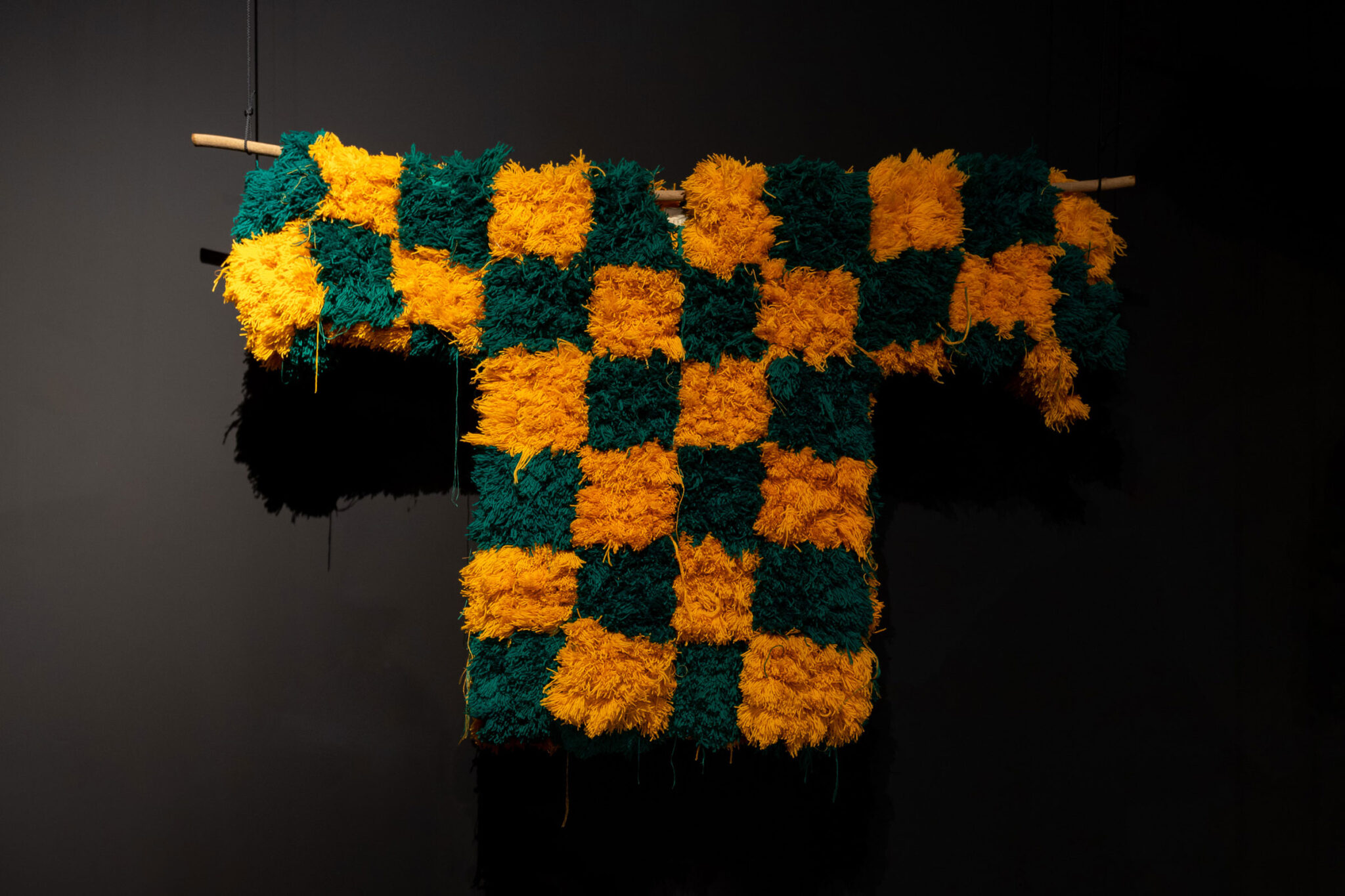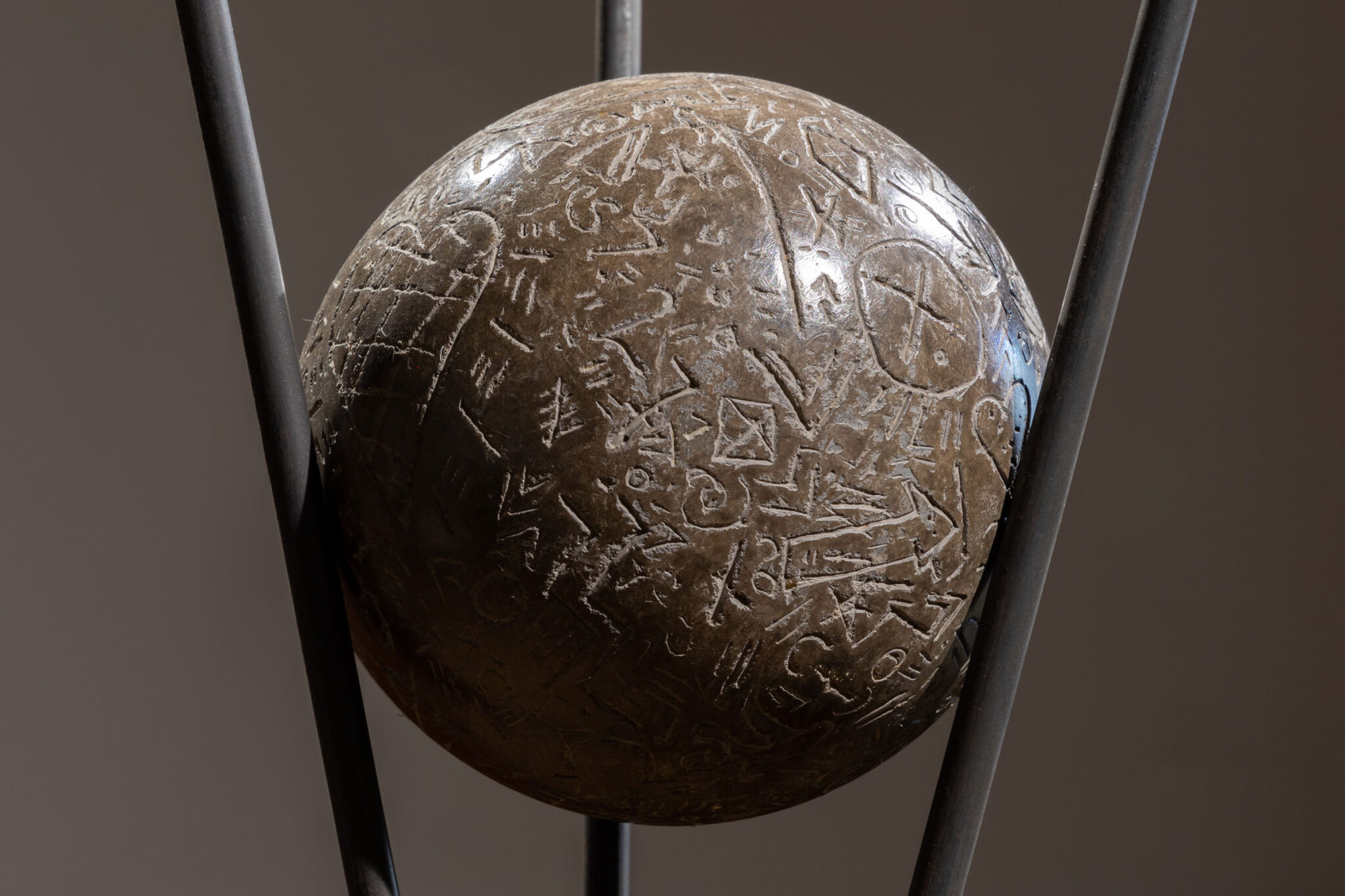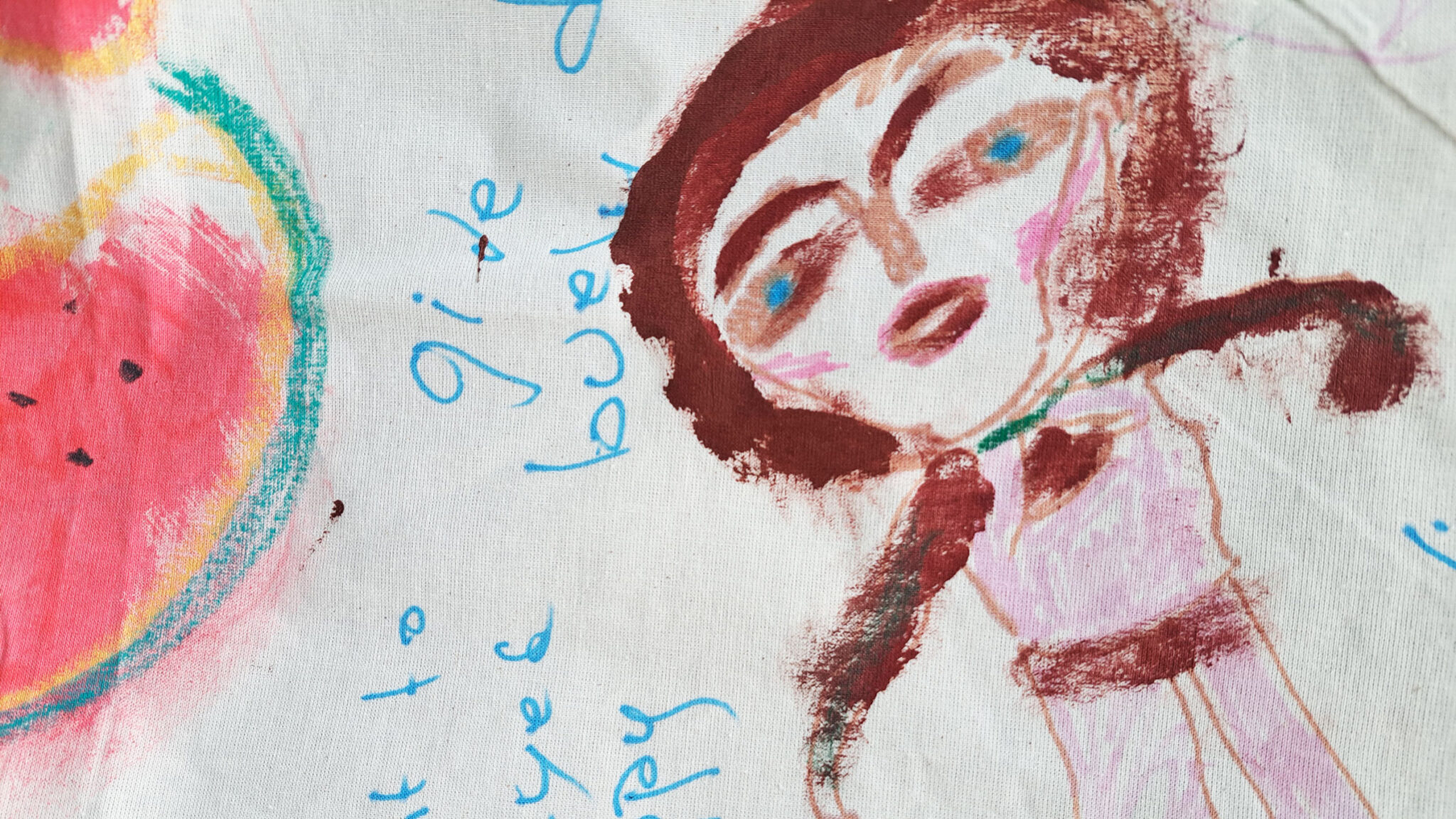Drawing on the ritual use of adornments in various sacred African institutions, including the Nwantantay of Burkina Faso, the Bedu of Ivory Coast and the Ogbodo Enyi of Nigeria, Ogisi’s works respond to complex symbolism represented by these practices.
Expanding out from the Shirley Cooper Gallery and Gallery 9, Ogisi’s exhibition includes a large scale, handmade tapestry, hung adjacent to the Atrium, and is completed by four original flags, commissioned for The Tetley’s roof.
With a focus on using and reusing natural and non-natural materials, including raffia, sheet metal, glass beads, plant fibres and plastic, the exhibition explores mask making as a decolonial process of healing disorder through experimentation with traditional and innovative techniques.
Ogisi invites you into an imagined ‘sacred grove’, a secret space where objects used in masquerading are stored outside of their use in rituals. The family of objects used in these ceremonies offers the possibility of spiritual transfiguration of the body and soul. The wearer, temporarily released from their own sense of ‘self’, is free to be guided by supernatural forces.
Masquerading is presented as a tool for connecting with a mythic tradition that challenges present ideas of the self and our relationship to our bodies, environment and spiritual world.
The exhibition is the culmination of The Tetley’s Here, There & Everywhere partnership with New Art Exchange.
Here, There & Everywhere is New Art Exchange’s international programme, supported by Ambition for Excellence, Arts Council England.
Please note, the installation includes over a tonne of rubber flooring distributed throughout the galleries.
About the artist
Bubu Ogisi is a textile fibre artist and Creative Director of the contemporary womenswear brand, IAMISIGO. Born in Lagos, Nigeria, she now lives between Lagos; Accra, Ghana; Abidjan, Ivory Coast; and Nairobi, Kenya.
Ogisi’s work explores how the body exists and interacts with space by creating wearable art pieces and installation art pieces with unconventional organic materials and ancient textiles traditions from all over the African continent.
The idea of rawness, anti-‘finishing’ (and therefore anti-Eurocentrism) and functionality exist as strong conceptual design threads throughout her work. By exaggerating texture, structure and space she is able to break and transform the rules and expectations of what textiles can do.

